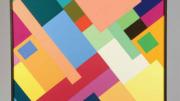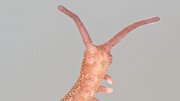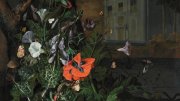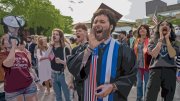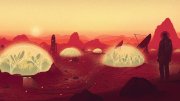“Visual Science: The Art of Research,” opening September 20, explores how objects and images have long been used to prove or convey scientific principles. The works, drawn from collections and laboratories across the University, can “record fleeting observations, whether a painting of an animal glimpsed in the field, or an interaction between sub-atomic particles that lasts a fraction of a second,” the exhibit notes. “They can also make unseen things visible.”
Like vibrational patterns of sound. “Sand plate” images, based on experiments by eighteenth-century German physicist and musician Ernst Chladni, reveal how stroking a string instrument’s bow across the edge of a metal plate sprinkled with sand shifts the grains into variable designs that trace the vibrational waves.
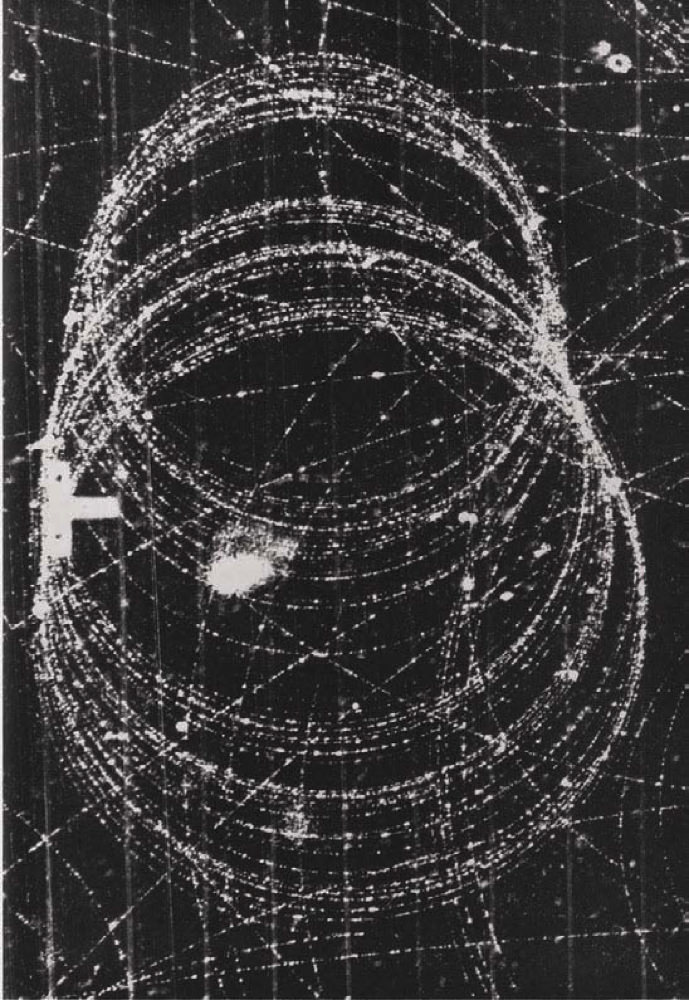
The image shows an electron spiraling in a high-powered magnetic field.
Image courtesy of the Harvard Collection of Historical Scientific Instruments
Also on display at the Collection of Historical Scientific Instruments gallery in the Science Center is the picture of an electron spiraling in a high-powered magnetic field (above), recorded at the Lawrence Radiation Laboratory, in Berkeley, California. (Lab founder Ernest Orlando Lawrence, Sc.D. ’41, won the 1939 Nobel Prize in physics for inventing the atom-smashing cyclotron, a pivotal breakthrough in conducting high-energy physics.)
The “Mondrian” color-paper collage (at top) is among the 1970s materials used by scientist Edwin H. Land ’30, S.D. ’57, to develop his influential “Retinex Theory of Color Vision.” Land studied chemistry at Harvard, but dropped out and went on to invent Polaroid photography (and co-found the eponymous Cambridge-based corporation; see Treasure, March-April 2017, page 76), which popularized the art form—arguably setting the stage for today’s image-driven digital revolution.
